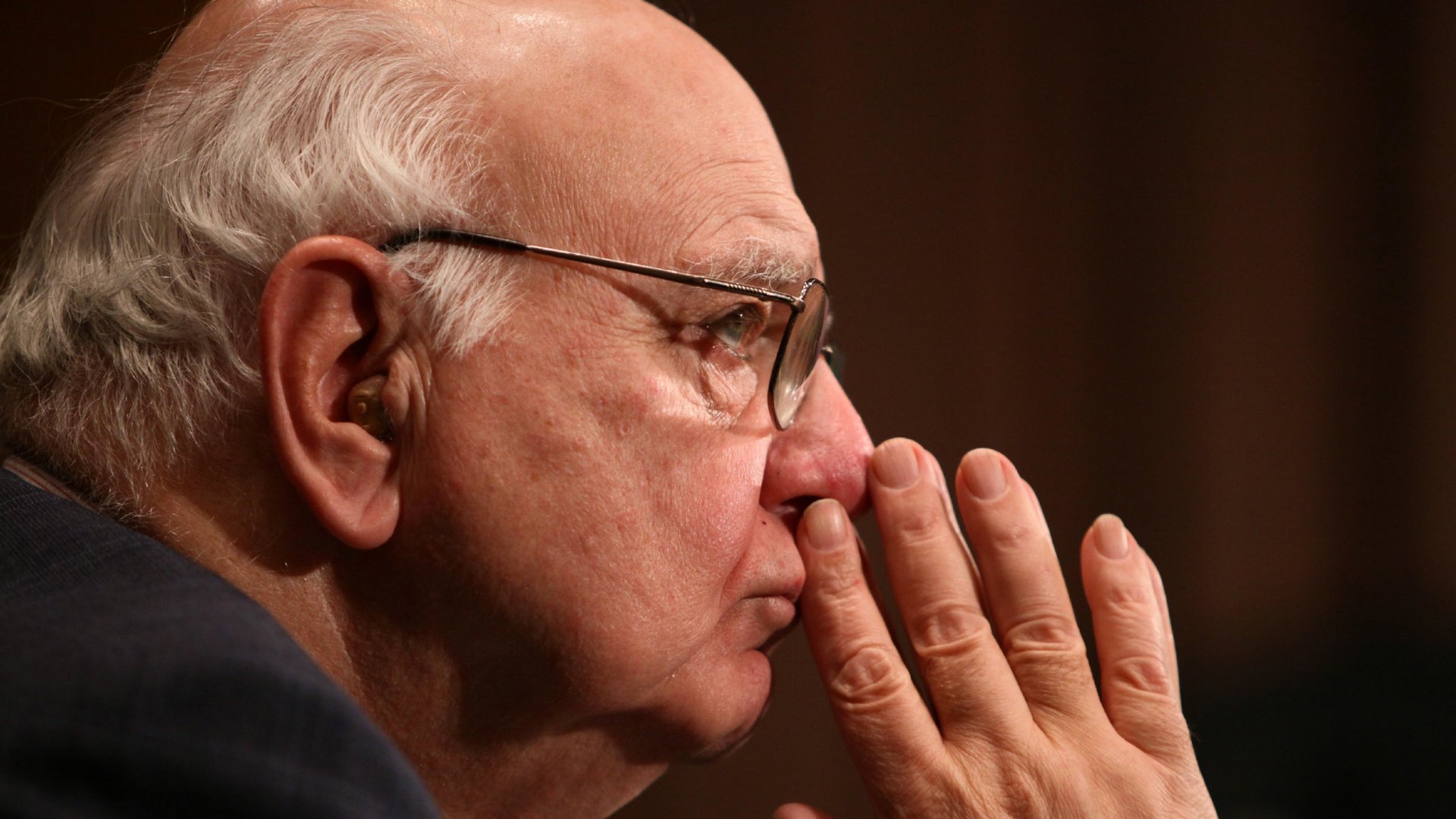The biggest mistake 60-year-old men make about the economy
I checked, and re-checked, and triple-checked, and I can confirm that it’s not 1979 anymore.


I checked, and re-checked, and triple-checked, and I can confirm that it’s not 1979 anymore.
Now, that shouldn’t be too surprising—I’m not writing this on an Apple II, after all—but it is to a generation of men (and yes, they are all men) who think stagflation is always and everywhere a looming phenomenon. No matter how low inflation goes, they see portents of Weimar. But that neverending 70s show isn’t just a phobia of rising prices. It’s the idea that the solution to economic pain is more pain. In other words, Volcker-worship.
Stagflation wasn’t supposed to happen, but it did. Economists had thought there was a stable relationship between higher unemployment and lower inflation—the Phillips Curve—that broke down in the 1970s: prices rose, but so did joblessness. It broke down because people started to expect more inflation the more inflation there was. This cycle of ever-rising prices got going with too loose monetary policy, and continued with the oil shocks. The former started when Richard Nixon pressured Fed Chair Arthur Burns into lowering rates in the runup to the 1972 election, and the latter turned commodity inflation into wage inflation due to widespread cost-of-living-adjustment contracts. It wasn’t until Jimmy Carter appointed Paul Volcker to run the Fed in 1979 that things began to turn around. After unsuccessfully trying to target the money supply, Volcker decided to jack up interest rates, and keep them there, until inflation came down. It worked.
But whipping inflation didn’t exactly make Volcker popular in the short run. It took what was at the time the deepest recession of the postwar period to bring down people’s inflation expectations. Out-of-work homebuilders sent two-by-fours they no longer needed to the Federal Reserve; farmers barricaded it with their tractors. In other words, it was the paragon of what Very Serious People think about when they think about “leadership”: inflicting pain today for a better tomorrow. It just so happened that in this case, it was the right thing to do.
It’s not now.
Our present problem isn’t too little inflation-fighting, but too much. Indeed, headline prices rose just 1.1 percent in April, while unemployment is still a depressing 7.5 percent. But it’s not just the unemployment; it’s the long-term unemployment. Millions have been out of work for six months or longer, at which point companies won’t even look at your resume. The only bit of good news is this is an easy problem to solve: with interest rates as low as they’ll ever be, the government can borrow money and put people back to work. It’s really that simple.
Except for people who don’t want it to be that simple. People like Michael Kinsley. He’s the not-so-rare austerian who’s suspicious of stimulus because it seems like the easy wrong instead of the hard right. Here’s what he said about it in The New Republic:
I don’t think suffering is good, but I do believe that we have to pay a price for past sins, and the longer we put it off, the higher the price will be.
This gets things completely backwards. The longer we put off austerity, the lower the price will be, since fewer of the long-term unemployed will become unemployable. And besides, there’s no reason we shouldn’t produce as much as we can now just because we made mistakes before. As Keynes said, the resources of nature and men’s devices are just as fertile and productive as they were — or, as John McCain might put it, the fundamentals of the economy are strong. It’s up to us to make those fundamentals work with the right ideas.
But this doesn’t make for an exciting narrative. A failure of ideas is much less dramatic than a failure of Leadership™. Where’s the sacrifice? The hard-headed vision? That’s what Kinsley pined for back in 2010, when he lobbed this puzzling complaint about the stimulus:
But this cure has been one ice-cream sundae after another. It can’t be that easy, can it? The puritan in me says that there has to be some pain. That’s not to say that there hasn’t been plenty of economic pain. But that pain has come from the recession itself, not the cure.
In other words: Give me Volcker, not Keynes. Give me penance, not prosperity. Give me hard choices, not easy ways out. But most of all, give me what worked in the past.
That would all be fine if it were still 1979. It’s not. The facts have changed. It’s time for inflationistas to change their minds.
Matthew O’Brien is an associate editor at The Atlantic covering business and economics. He has previously written for The New Republic.